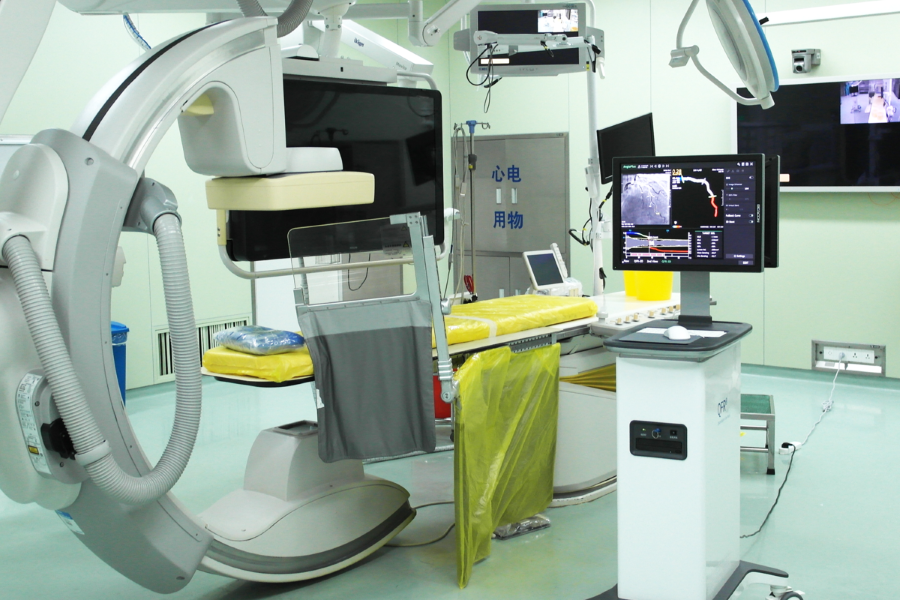Shanghai Pulse Medical Files for HK Listing Despite Weak Vital Stats

Company is the latest in a growing series of Chinese medical device makers to file for Hong Kong IPOs
Key takeaways:
- Shanghai Pulse Medical has filed to list in Hong Kong, despite posting a major jump in its net loss in the first nine months of last year
- The company sees big potential in the market for cardiovascular surgery-related products as Chinese society continues to age
By Ken Lo
Shanghai Pulse Medical Technology Inc. is hoping its story of catering to China’s increasingly aging population will excite investors, as it becomes the latest Chinese medical device maker to line up for a Hong Kong IPO.
There’s no doubt that China is rapidly aging. The country now has as many as 185 million people age 65 or older, with the group expanding by around 5.4% each year from 2016 to 2020. As that group grows, demand is expected to boom for diagnostics and therapeutics to treat cardiovascular conditions that are more common among older people. That looks like the perfect opening for companies like Shanghai Pulse Medical – assuming it can figure out how to make profits in its area of specialization.
Founded in 2015, the company provides digital diagnostics and therapeutic products for pan-vascular intervention surgeries. Its prospectus shows that its revenue reached 50.1 million yuan ($7.9 million) in the first nine months of last year, up fivefold year-on-year. Revenue from its self-developed and self-manufactured quantitative flow ratio (QFR) products accounted for around 90% of the total, which also included 4.5 million yuan from technological services.
But like many of the people its devices serve, the company is still bleeding red ink. It lost 204 million yuan in the first nine months of last year, 26 times greater than the same period a year before, mostly due to a hefty 162 million yuan in administrative expenses and another 24.8 million yuan for R&D. Shanghai Pulse Medical expects its administrative spending will grow further still, related to legal affairs, compliance, accounting and investor relations management as its business expands. Something investors should bear in mind.
Coronary artery disease (CAD) is the main cause of death from cardiovascular disease, according to third-party market data cited in the company’s prospectus. China had 25.3 million CAD patients in 2020, and the number is expected to increase to 31.7 million by 2030. While bad news for patients, such numbers point to real and substantial opportunities for the medical industry.
Increasing use of non-invasive surgeries to treat cardiovascular diseases has created big demand for more digital products in the fields of advanced physiology and endovascular imaging techniques. That has made products associated with vascular interventions a popular and promising segment of the medical device market.
Imaging-based fractional flow reserve (FFR) is now the most commonly used surgical procedure for CAD treatment, and is the most accurate at assessing the severity of coronary blockage. The CAD-focused FFR market is expected to grow exponentially from 133 million yuan in 2020 to 20.97 billion yuan by 2030 at a compound annual growth rate of 65.9%.
However, compared with FFR tests that require vasodilator injections and extra guiding wires, thus incurring greater risks and costs, the quantitative flow ratio (QFR) tests that are Shanghai Pulse Medical’s specialty can simply use results from coronary angiography (XA) imaging as the basis for calculations. That means they don’t require the administration of drugs and use of guiding wires, even as they are second only to FFR in accuracy but with much lower risk and cost. Data in Shanghai Pulse Medical’s prospectus shows that it costs around 9,000 yuan to 17,000 yuan alone for each FFR test with guiding wires, while the cost for a QFR test was significantly lower at 2,900 yuan to 4,200 yuan.
Big valuation?
Shanghai Pulse Medical bills itself as China’s only licensed provider of all major pan-vascular intervention tests. Its products, QFR V1 and QFR V2, were approved in China, and the latter has also been approved in the EU. The company is currently aiming for similar approval in the U.S., with plans to initiate clinical trials in the first half of 2023 and complete them by the end of 2024.
Shanghai Pulse Medical plans to use money from its IPO to fund the continued development, production and commercialization of its key products, as well as those still in the early stages of development. In addition, the company has expressed interest in using the funds for strategic acquisitions, investment, collaboration and licensed distribution of other companies’ products.
Shanghai Pulse Medical has already secured investment from big guns like Hillhouse Daoheng Equity Investment, Philips (PHG.US), Goldman Sachs (GS.US) and Boyu Capital. Its valuation rose to around 5.18 billion yuan after completion of its C-series funding on Aug. 31 last year. Hillhouse Daoheng is the company’s biggest institutional investor with 14.54% of its shares before the IPO.
Many medical device makers have taken advantage of rules that allow money-losing companies from the sector to go public in Hong Kong, which normally bans such loss-making firms. Those include Shanghai Bio-heart (2185.HK), Acotec Scientific (6669.HK), Zylox-Tonbridge Medical (2190.HK) and MicroPort CardioFlow Medtech (2160.HK), all of which come from the pan-vascular intervention space. Another two companies that filed for Hong Kong IPOs, Insight Lifetech and Rainmed Medical Technology, are direct competitors of Shanghai Pulse Medical.
While details on the IPO have yet to be released, we can use the average price-to-sales (P/S) ratio of the four companies already listed to get a rough estimate of how Shanghai Pulse Medical might be valued. Ratios among the four vary widely, from 17.8 times to as much as 594 times. Given the company’s total revenue this year should be around HK$119 million based on the published earnings in the first three quarters, using an average P/S ratio of 191 times from the above peers would give Shanghai Pulse Medical a valuation of up to HK$15.7 billion ($2 billion) at its IPO. That would be three times what it got after the series-C funding just half a year ago – not bad if it really can achieve that level.
To subscribe to Bamboo Works free weekly newsletter, click here






